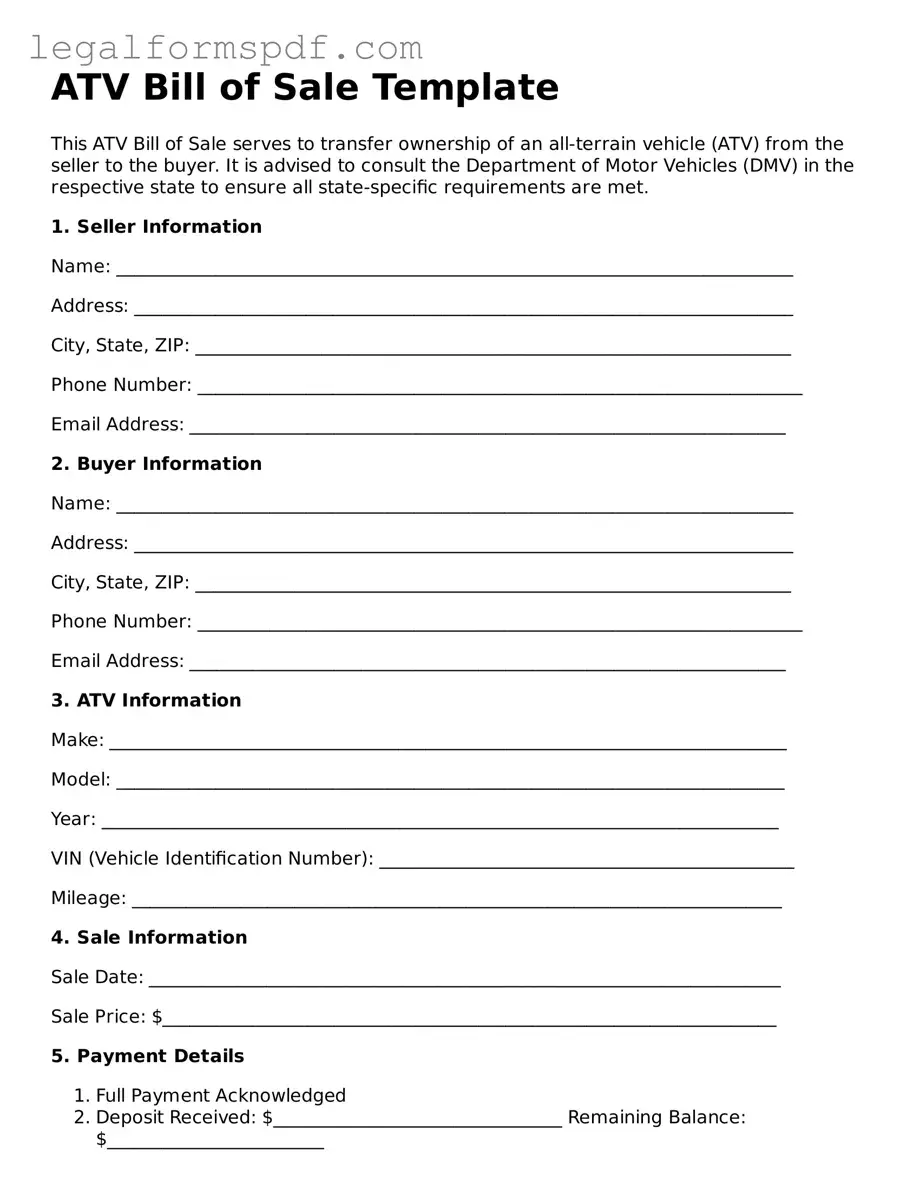ATV Bill of Sale Template
This ATV Bill of Sale serves to transfer ownership of an all-terrain vehicle (ATV) from the seller to the buyer. It is advised to consult the Department of Motor Vehicles (DMV) in the respective state to ensure all state-specific requirements are met.
1. Seller Information
Name: ___________________________________________________________________________
Address: _________________________________________________________________________
City, State, ZIP: __________________________________________________________________
Phone Number: ___________________________________________________________________
Email Address: __________________________________________________________________
2. Buyer Information
Name: ___________________________________________________________________________
Address: _________________________________________________________________________
City, State, ZIP: __________________________________________________________________
Phone Number: ___________________________________________________________________
Email Address: __________________________________________________________________
3. ATV Information
Make: ___________________________________________________________________________
Model: __________________________________________________________________________
Year: ___________________________________________________________________________
VIN (Vehicle Identification Number): ______________________________________________
Mileage: ________________________________________________________________________
4. Sale Information
Sale Date: ______________________________________________________________________
Sale Price: $____________________________________________________________________
5. Payment Details
- Full Payment Acknowledged
- Deposit Received: $________________________________ Remaining Balance: $________________________
- Other: ________________________________________________________________________
6. Additional Terms and Conditions
________________________________________________________________________________
________________________________________________________________________________
________________________________________________________________________________
7. Declaration
This document confirms the transfer of ownership of the ATV described herein from the seller to the buyer. The seller certifies that the information provided is accurate to the best of their knowledge and that the ATV is sold in "as is" condition without any guarantees or warranties expressed or implied.
By signing below, both parties agree to the terms and conditions of this Bill of Sale.
Seller's Signature: ____________________________________ Date: _______________
Buyer's Signature: _____________________________________ Date: _______________
Witness Signature (if required): ________________________ Date: _______________
Note: It is highly recommended to keep a copy of this document for personal records and to possibly register the ATV with the local state's DMV office if required.
